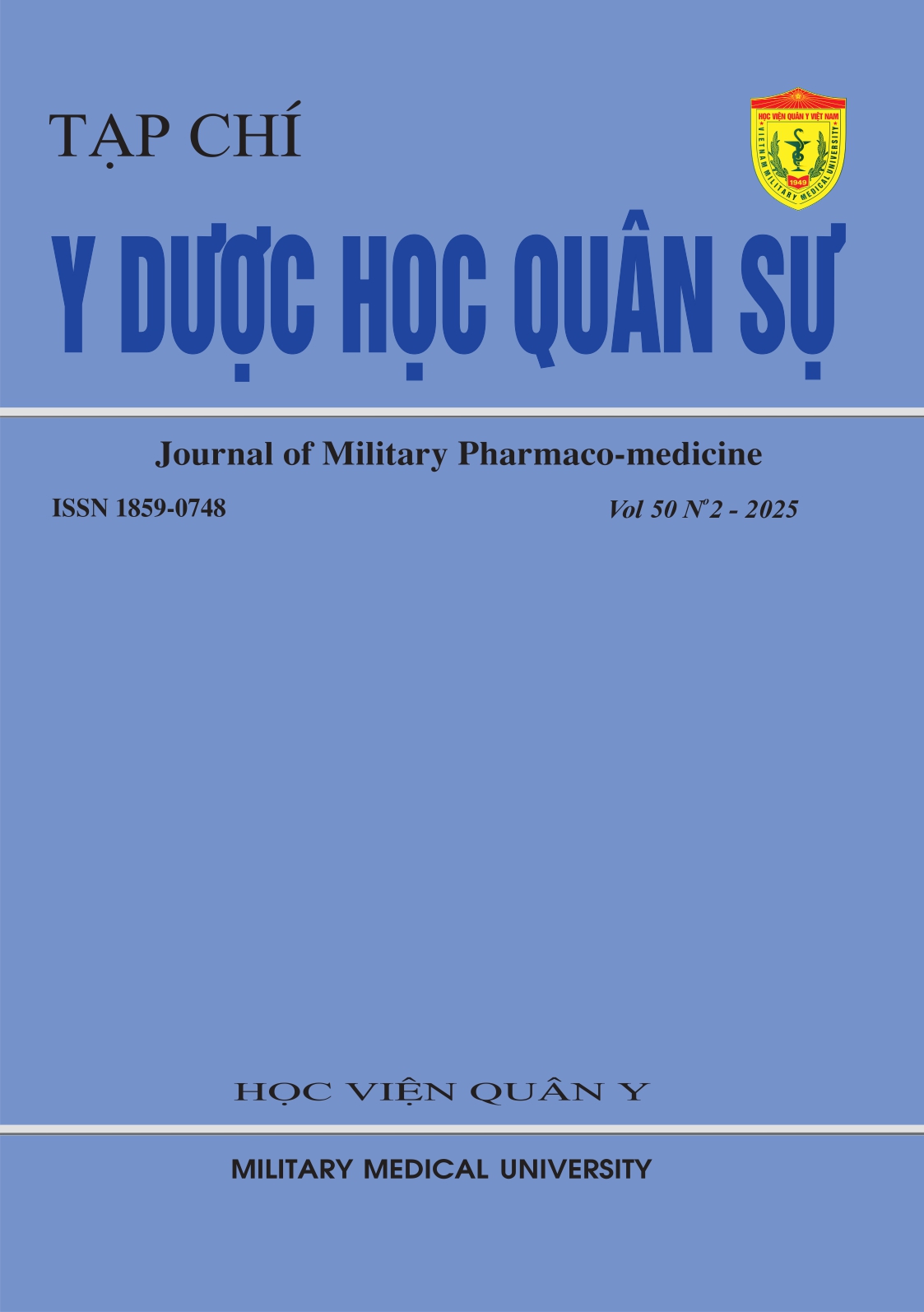DISTRIBUTION AND ANTIBIOTIC RESISTANCE CHARACTERISTICS OF BURKHOLDERIA CEPACIA ISOLATED FROM MILITARY HOSPITAL 103
Main Article Content
Abstract
Objective: Study distribution and antibiotic resistance characteristics of Burkholderia cepacia species isolated from Military Hospital 103 in the period from 2014 to 2022.
Subject and methods: This was a crosssectional study. The subject of the study was B. cepacia isolated from Military Hospital 103 in the period from 2014 to 2022.
Result: 101 stains of pathogenic bacteria Burkholderia cepacia have been isolated during reseach process. Age: from 50 to 69 (40.6%), ≥ 70 (29,7%); Male/ female ratio: 2.9/1. The specific distribution ratio is as follows: internal medicine departments account for 55.4%, ICU accounts for 25.7%. Blood specimens account for 79.2%, respiratory specimens account for 18.8%. B. cepacia has an antibiotic resisitance rate of over 90% for the following antibiotics: amoxicillin, extended spectrum penicillins (piperacillin, ticarcillin), imipenem, aminoglycoside (gentamycin, tobramycin), fosmicin; low resistance rate for levofloxacin 24.3%, ceftazidime 15.7%, meropenem 12.8% and lowest for trimethoprim/sulfamethoxazole 7.0%.
Conclusion: Burkholderia cepacia commonly causes disease in patients over 50 years old, male gender, mostly isolated on blood and respiratory specimens. B. cepacia has high resistance rates to extended spectrum penicillins antibiotics, aminoglycoside antibiotics, and low resistance rates to levofloxacin, ceftazidime, meropenem and trimethoprim/sulfamethoxazole.
Article Details
Keywords
Burkholderia cepacia, antimicrobial resistance, Military Hospital 103
References
2. Siddiqui T, Sahu C, Patel SS, et al. Clinical and microbiological profile of patients with bloodstream infections caused by Burkholderia cepacia complex. J Lab Physicians. 2022; 14(3):312-316.
3. Jones AM, Dodd ME, Webb AK. Burkholderia cepacia: Current clinical issues, environmental controversies and ethical dilemmas. European Respiratory Journal. 2001; 17(2):295-301.
4. Trần Minh Giao. Khảo sát đặc điểm nhiễm Burkholderia cepacia tại Bệnh viện Nhân dân Gia Định. Tạp chí Y học Thành phố Hồ Chí Minh. 2009; 13(6):112-119.
5. Suhartono S, Mahdani W, Muzayanna NN. Prevalence of Burkholderia cepacia recovered from clinical specimens in the Zainoel Abidin General Hospital, Banda Aceh, Indonesia. Iran J Microbiol. 2023; 15(1):38-44.
6. Correa-Martínez CL, Schuler F, Kampmeier S. Sex differences in vancomycin-resistant enterococci bloodstream infections-a systematic review and meta-analysis. Biol Sex Differ. 2021; 12(1):36.
7. Srinivasan S, Arora NC, Sahai K. Report on the newly emerging nosocomial Burkholderia cepacia in a tertiary hospital. Medical Journal Armed Forces India. 2016; 72:50-53.
8. Coenye T. Social interactions in the Burkholderia cepacia complex: Biofilms and quorum sensing. Future Microbiol. 2010; 5(7):1087-1099.
9. El Chakhtoura NG, Saade E, Wilson BM, et al. A 17-Year nationwide study of Burkholderia cepacia complex bloodstream infections among patients in the United States veterans health administration. Clin Infect Dis. 2017; 65(8):1253-1259.


